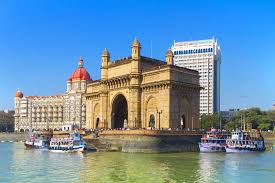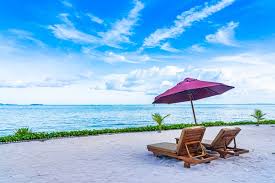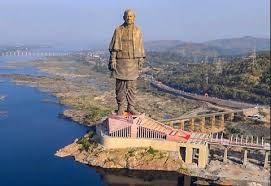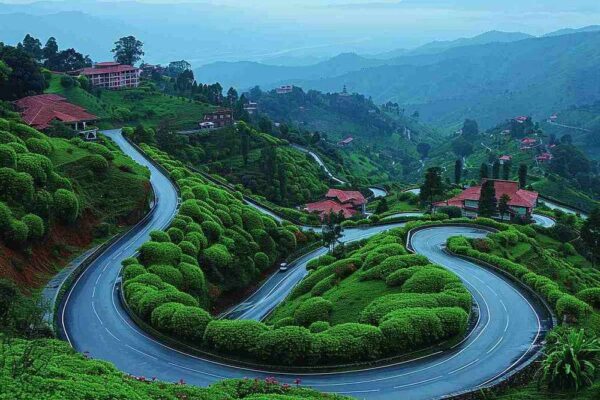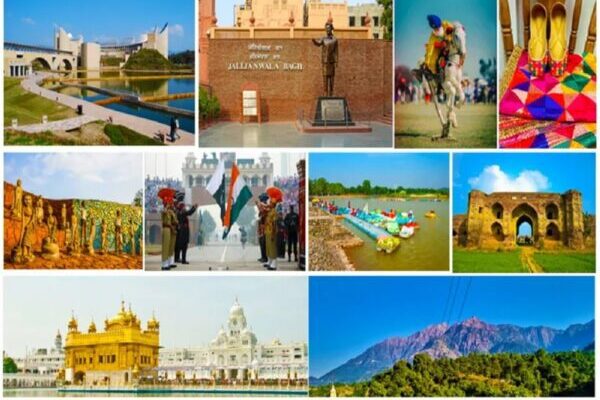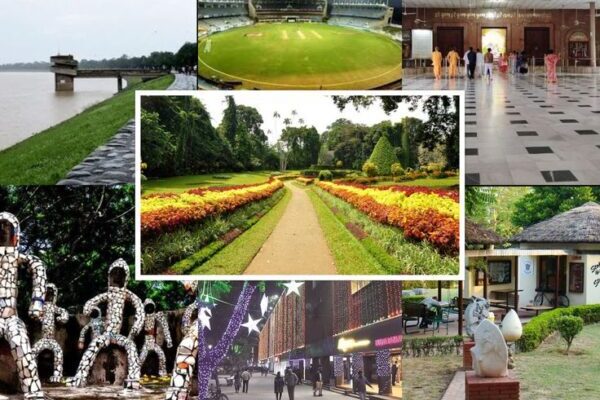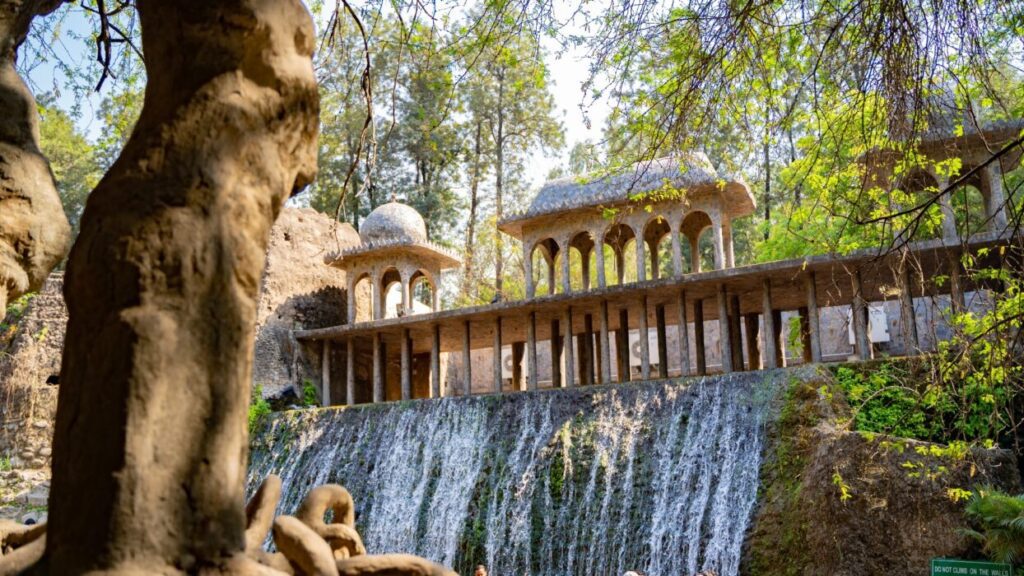05 Day(s) 04 Night(s)

west India
West India, also known as Western India, is a region of rich cultural heritage, diverse landscapes, historical significance, and economic development. From ancient architecture and vibrant festivals to scenic beaches and bustling cities, it offers a unique combination of tradition and modernity.
The Western region of India consists of the Indian states of Gujarat, Maharashtra and Goa, as well as the Union Territories of Dadra and Nagar Haveli and Daman and Diu. It is bounded by the Thar Desert in the north, the Vindhya Range in the north and east, Deccan Plateau in the south, and the Arabian Sea in the west.
West India has a rich historical legacy. Before being dominated by the British, the region was ruled by a number of dynasties, including the Rashtrakutas, Mauryas, Guptas, Rajputs, Satavahanas, Western Satraps, Indo-Greeks, Vaghelas, the Delhi Sultanate, and the extremely formidable Maratha Empire. Following India’s independence in 1947, the current state boundaries were set in 1956 using linguistic criteria.
A Quick Facts About North India:-
| Total States in Western Region of India | 3 |
| Total Union Territory in Western Region of India | 1 |
| Land Area in Western Region of India | 508,032 Sq. Kms |
| Largest State of Western Region of India (in terms of Population) | Maharashtra |
| Largest State of Western Region of India (in terms of Area) | Maharashtra (covering 307,713 Sq. Kms) |
| Largest City in Western Region of India | Mumbai |
| Goa Foundation Day | 30th May, 1987 |
| Gujarat Foundation Day | 1st May, 1960 |
| Popular Places of Tourist Interest in Western Region of India | Beaches, Religious , Hill Stations, Heritage, Adventure, Festivals and more |
The States and Union territories under the region are all quite different and have rich and unique cultures. Western Indian cuisine is diverse, encompassing everything from Gujarat’s sweet and savory vegetarian delicacies like dhokla and Thepla to Maharashtra’s spicy street snacks like vada pav and misal pav, as well as coastal seafood. Goa contributes rich Indo-Portuguese tastes to dishes like fish curry and bebinca, whilst Daman & Diu, and Dadra & Nagar Haveli incorporate tribal, Gujarati, and Portuguese influences into its traditional cuisine.
The region offers colorful dance styles and music that reflect its cultural richness. Gujarat is recognized for its frenetic Garba and Dandiya Raas, which are accompanied by rhythmic folk music, while Maharashtra is known for beautiful Lavani with powerful dholki beats. Goa has energetic folk dances like Fugdi and Dekhni accompanied by Konkani folk tunes, while the tribal districts of Dadra and Nagar Haveli highlight traditional dances like Tarna and Tur.
Furthermore, Western India is well known for its rich and intricate art and craft traditions. Gujarat is known for its Bandhani tie-dye, Patola silk weaving, and mirror work embroidery. Maharashtra is recognized for Warli tribal paintings and Paithani sarees, whilst Goa is known for azulejos tile art, seashell mirrors and brassware. Daman & Diu and Dadra & Nagar Haveli’s woodcraft, bamboo work, and folk artistry reflect a blend of tribal and Portuguese influences.
The architecture of Western India exhibits a mix of ancient, colonial, and tribal influences. It includes the finely carved temples and stepwells of Gujarat, the Maratha forts and colonial buildings of Maharashtra, the Portuguese churches of Goa, and the ancient tribal structures of Dadra & Nagar Haveli and Daman & Diu.
Western India is religiously diverse, with Hinduism being the most dominant faith. Islam came next, followed by Christians, Buddhists, Jains, and Parsis (Zoroastrians). Marathi, Gujarati, and Konkani are extensively spoken in Western India. Hindi and English are frequently used for communication, administration, and education In addition, tribal languages like Bhili and Warli are spoken in the rural and tribal areas.
The western region of India boasts the perfect potpourri of adventure, spirituality, heritage, and relaxation that offers a dazzling, diverse and enriching travel experience. From Gujarat’s white salt desert and historic temples to Maharashtra’s bustling cities and UNESCO World Heritage caves. Goa entices with its golden beaches, vibrant nightlife, and Portuguese charm, while Daman, Diu, and Dadra & Nagar Haveli provide serene coastal getaways and colonial architecture.
Tourists have a wide range of options for theme-based vacations in Western India, such as cultural & heritage, beach getaways, nature, wildlife, religious sites and more. Each type of vacation shines best in a specific season. For example, Goa beaches , Gir National Park Safari, Ajanta and Ellora Caves would be at their best during the winter season. Mahabaleshwar, Lonavala, Mathern, Daman and Diu beaches would be at their best during the summer season.
The western region of India is rich in customs and traditions, and the region’s genuine colors are expressed in its fairs and festivals, which provide immense delight to the residents. Rann Utsav, Kite Festivals, Ganesh Chaturthi, Navratri, Kala Ghoda Fair, and Goa Carnival are among the region’s most popular fairs and festivals.
The western region of India has numerous international and domestic airports in Ahmedabad, Mumbai, Pune and Goa (Dabolim and Mopa) that serve many destinations across the globe. An extensive railway network links the region to other parts of the country, making train travel a convenient option. Additionally, the region boasts a well-developed road infrastructure, with well-paved state and district highways ensuring easy connectivity to major states and cities. travellers can easily reach their desired destinations through State-Run and Private buses, local taxis/cabs and personal vehicles. Coastal cities like Goa and Mumbai also offer limited cruise services, adding a unique travel option for tourists.


TOUR PACKAGES OF WEST INDIA
FAQ
FAQ
Q: What is the best time to visit Western India ?
A: The best time to visit Western India is from October to March, when the climate is cool, pleasant, and perfect for sightseeing and outdoor activities.
| Months | Min/Season | Best for |
| October to March | Winter | Great for discovering forts, deserts, wildlife parks, beaches, and lively festivals, along with enjoying outdoor adventures in cool, pleasant weather |
| April to June | Summer | Enjoying cooler hills stations and indoor cultural experience |
| July to September | Monsoon | Enjoy the lush greenery, cascading waterfalls, and monsoon treks in the Western Ghats and Konkan region, while also experiencing the vibrancy of festivals like Ganesh Chaturthi |
Q: How many days are needed to explore Western India?
A: A 10–12 day trip is ideal for exploring Western India, giving you enough time to visit key destinations such as Mumbai, Goa, and Gujarat, and enjoy beaches, deserts, heritage sites, and cultural landmarks. Trips of 5–7 days cover only select areas, while two weeks or more allow for a more leisurely and comprehensive exploration.
Q: What are the must visit places in Western India?
A: The must visit places in Western India include Mumbai for its lively urban vibe, Goa for its beaches and nightlife, and Gujarat for the Rann of Kutch and diverse wildlife sanctuaries.
Q: What are the best places to visit during the winter in Western India?
A: The best places to visit in Western India during winter are Goa for its enjoyable beaches and vibrant carnival season, and Gujarat for the Rann of Kutch during the White Desert Festival and its wildlife experiences.
Q: What are the best places to visit during the summer in Western India?
A: The best places to visit in Western India during summer are Lonavala and Mahabaleshwar in Maharashtra for hill station getaways, and Saputara in Gujarat for verdant landscapes and comfortable temperatures.
Q: What are the best places to visit during the monsoon in Western India?
A: The best places to visit in Western India during the monsoon are Lonavala, Mahabaleshwar, and Matheran in Maharashtra for mist-covered hills and waterfalls, Goa for its verdant landscapes and tranquil beaches, and Saputara in Gujarat for scenic views and cascading waterfalls.
Q: Which are the most crowded cities in Western India?
A: The most crowded cities in Western India are Mumbai, Pune, Ahmedabad, and Surat, famous for their lively streets, heavy traffic, and high population density.
Q: What are the most visited tourist attractions in Western India?
A: The most visited tourist attractions in Western India include the Gateway of India and Marine Drive in Mumbai, the famous beaches of Goa, the Ajanta and Ellora Caves in Maharashtra, along with Gujarat’s Rann of Kutch and Gir National Park.
Q: What are some popular activities to do in Western India?
A: Some popular activities in Western India are:
- Enjoying beaches and water sports in Goa, Diu, and Alibaug.
- Going on wildlife safaris at Gir National Park to see Asiatic lions or exploring the Rann of Kutch.
- Visiting historic forts and palaces in Maharashtra.
- Experiencing trekking and hill stations like Lonavala, Mahabaleshwar, and Saputara.
- Immersing in cultural festivals such as Navratri in Gujarat or Ganesh Chaturthi in Maharashtra.
Q: Which is the best wildlife destination to explore in Western India?
A: The best wildlife destination in Western India is Gir National Park in Gujarat, renowned as the sole natural habitat of the Asiatic lion.
Q: What are some popular historical sites in Western India?
A: Some popular historical sites in Western India include the Ajanta and Ellora Caves and Gateway of India in Maharashtra, and Rani-ki-Vav and Champaner-Pavagadh Archaeological Park in Gujarat.
Q: What are the famous beaches and coastal attractions in Western India?
A: The famous beaches and coastal attractions in western India include Baga, Calangute, and Palolem in Goa for sun, sand, and vibrant nightlife, Nagoa Beach in Diu for a serene escape, and Alibaug in Maharashtra for picturesque beaches and historic forts. Mandvi Beach in Gujarat provides calm shores and beautiful sunsets.
Q: Are there any hidden gems or offbeat destinations in Western India?
A: Yes, Western India has several offbeat gems like Diu with its tranquil beaches and Portuguese heritage, Velas in Maharashtra known for turtle conservation, Mandvi in Gujarat with its calm beaches and palaces, and Saputara offering a serene hill station retreat.
Q: What are some of the most popular tourist circuits in Western India?
A: Some of the most popular tourist circuits in Western India are:
- Maharashtra Heritage Circuit ( Mumbai – Ajanta & Ellora Caves – Aurangabad )
- Goa & Konkan Coast Circuit (Goa – Alibaug – Ratnagiri )
- Gujarat Circuit – a blend of wildlife, temples, and cultural festivals (Ahmedabad – Gir National Park – Somnath – Rann of Kutch)
Q: Are there any UNESCO World Heritage Sites situated in Western India?
A: Yes, Western India boasts several UNESCO World Heritage Sites, such as:
- Ajanta and Ellora Caves (Maharashtra) – rock-cut temples and monasteries of Buddhist, Hindu, and Jain origin.
- Elephanta Caves (Maharashtra) – ancient rock-cut sculptures located near Mumbai.
- Rani-ki-Vav (Gujarat) – a historic stepwell in Patan.
- Champaner-Pavagadh Archaeological Park (Gujarat) – ruins of an ancient city featuring forts and temples.
Q: What are the famous festivals celebrated in Western India?
A: The famous festivals celebrated in Western India include Ganesh Chaturthi (particularly in Maharashtra), Navratri (famous for Garba and Dandiya dances in Gujarat), and Diwali and Holi. Other notable celebrations are the Goa Carnival, Rann Utsav in Gujarat, and the Kite Festival in Gujarat.
Q: What are popular things to buy in Western India?
A: Western India boasts a wealth of crafts, textiles, cuisine, and cultural souvenirs. Here are some of the most popular things to buy when visiting the region:-
- Textiles and clothing: Bandhani fabrics, Patola sarees, and Paithani sarees
- Handcrafts and decor: Sankheda furniture, Tangaliya and Kutch shawls, Rogan painting, Kutch embroidery
- Jewellery and Accessories: Local metalwork, mirror-glass ornaments, beadwork, Kolhapuri chappals, juttis, and Mojaris
- Home and Utility Items: Wall art, traditional painting like Warli, storage boxes, wooden chests, and carved panels
- Food and Wellness: Bakarwadi, Spices, Indian Sweets, and Ayurvedic products
Q: Which Western India cuisine should travellers and tourists try?
A: Western India invites travellers to savor its rich culinary diversity, with each state offering distinct flavors. Gujarat tempts with its hearty Gujarati Thali and soft dhokla, Maharashtra excites with street delights like vada pav and pav bhaji, while Goa adds a coastal touch with fresh seafood, spicy vindaloo, and the traditional dessert bebinca.
Q: Are there vegetarian and vegan options available in Western India?
A: Yes, Western India has an abundance of vegetarian and vegan-friendly dishes. Gujarat, in particular, is famous for its vegetarian specialties like dhokla and thepla, while lentil, millet, and vegetable-based recipes across the region cater well to vegan preferences.
Q: Is Western India Safe for solo travellers including women?
A: Western India is largely safe for solo travellers, including women, particularly in major tourist destinations and cultural centers. As with any trip, staying vigilant, respecting local norms, and following basic safety measures is advisable.
Q: What should travellers pack for a trip to Western India?
A: Travellers visiting Western India should pack carefully, keeping comfort, the climate, and local cultural norms in mind.
- Clothing:
- Light and breathable clothes
- Light Jacket
- Shawl or Scarf
- Swimwear for beaches and pool
- Footwear:
- Comfortable sandals or Flip-flop
- Sun Protection:
- Sunglasses
- Sunscreen
- Hat/ Caps
- Health and Hygiene:
- Personal medication
- Personal care products
- Hand Sanitizer
- Mosquito repellent
- Electronics:
- Power Bank
- Travel adapter
- Camera
- Travel Documents and Money:
- Passport and Visa
- ID Copies
- Travel Insurance
- Local Currency
- Other important documents
- Miscellaneous:
- Reusable water bottle
- Raincoat and Umbrella
- Reusable shopping bags
Q: Is it easy to get around Western India cities using public transport?
A: Yes, getting around Western India’s cities is fairly convenient with options like buses, local trains, metros (in cities like Mumbai and Ahmedabad), and auto-rickshaws. Ride-hailing apps such as Ola and Uber also make city travel easier for tourists.
Q: What should travellers and tourists wear when visiting temples and religious sites of Western India?
A: Travellers to Western India’s temples and religious sites are advised to dress respectfully, covering shoulders and knees. Comfortable, breathable clothing is recommended, and footwear must be taken off before entering.
Q: Is WiFi readily available in Western India?
A: WiFi is generally accessible across Western India, particularly in hotels, cafes, airports, and popular tourist spots. In more remote or rural areas, connectivity can be limited, so using a local SIM with data is advisable for uninterrupted access.
Q: Can travellers and tourists easily get a local SIM card in Western India?
A: Yes, Travellers in Western India can conveniently obtain a local SIM card. Leading providers such as Airtel, Jio, and Vi offer prepaid SIMs for tourists at airports and mobile outlets, typically needing a passport and a local photo ID. Activation is usually fast, taking just a few hours.
Q: Where can travellers and tourists exchange currency in Western India?
A: Travellers in Western India can exchange currency at banks, licensed money changers, and major airports, while some hotels provide limited exchange services. Comparing rates beforehand is recommended to get the best value.
Q: Where can travellers and tourists find ATMs in Western India?
A: ATMs are widely available across cities, towns, shopping malls, airports, and popular tourist spots in Western India. While most accept international cards, it’s advisable to keep some cash handy in case of network or connectivity issues.
Q: Are credit cards widely accepted in Western India?
A: Credit cards are commonly accepted in Western India, particularly at hotels, restaurants, shopping centers, and bigger stores. However, small local shops, street vendors, and rural areas often prefer cash, so it’s advisable to carry some.
Q: What cultural customs should travellers and tourists know before travelling to Western India?
A: Here are key customs and cultural pointers travellers should be aware of while visiting this region:
- Dress and Appearance:
- Wear modest clothing, especially in rural areas, temples and mosques. Shoulders and knees should be covered.
- Remove your shoes and cover your heads before entering religious sites.
- In Goa and beach towns, swimwear is acceptable at the beach but not in towns, markets, or religious places.
- Greetings and Etiquette:
- Use “Namaste” as a traditional greeting, and always use your right hand when eating or handing things to others, as the left is considered unclean. Public displays of affection should be avoided and reverence should be shown during religious rituals or ceremonies.
- Religion and Sacred Spaces:
- Avoid photographing idols without permission.
- In Jain temples, leather items such as belts and wallets are discouraged and only vegetarian food is allowed within temple grounds
- Food Customs:
- Many sites are vegetarian-friendly; avoid wasting food and respect local dining traditions.
- Festivals & Rituals:
- Observe local festivals and rituals respectfully, without interrupting ceremonies.
- Social and General Etiquette:
- Bargaining is common in markets — keep it friendly and respectful.
- Always seek permission before photographing people, especially women or rural communities.
- Show respect to elders — greet them first and value their opinions.
Q: Can travellers and tourists include a wellness retreat in their Western India tour?
A: Yes, Travellers in Western India can incorporate wellness retreats into their journey, with options ranging from luxury spa resorts in Goa to yoga and Ayurveda centers in Gujarat and Maharashtra.

